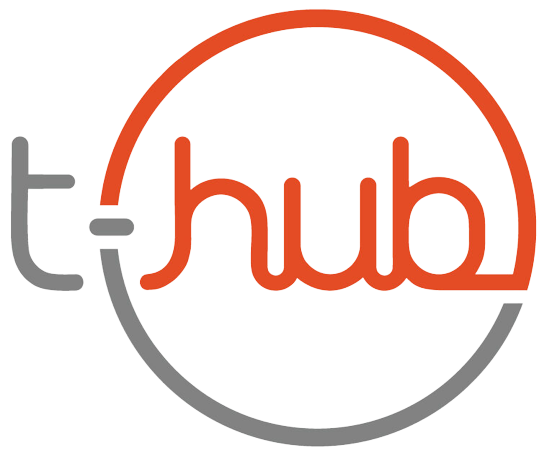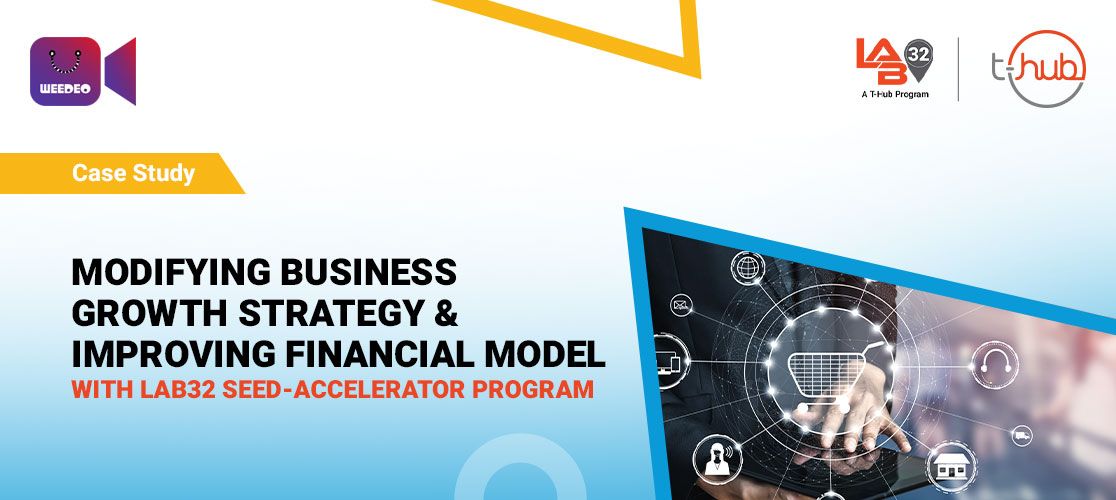The idea of this blog is to bring out some of the insights shared by industry experts during the recent Corporate Innovation roundtable anchored by T-Hub.
Cloud technology is changing the fundamental understanding of how business works. Enterprises are leveraging the cloud to reinvent business models and make conclusive decisions with the help of this transformational wave, brought about by cloud. You can perceive cloud adoption as a strategic move for reducing cost, risk and achieving scalability Cloud has been a trend for all these years, but now it is a necessity. Cloud migration has become easy and is the idea that will drive transformation as we see service providers becoming fluid by providing cloud-based solutions with the added incentive of offering flexibility from a payments standpoint.
Business trends, challenges and developments in the Cloud industry
The current scenario to a great extent has helped in differentiating and understanding cloud and its services. For example, Microsoft teams had a consumption of 9 million users prior to COVID, whereas now since the lockdown, it has risen to 72 million. Cloud providers promoted interest around cloud migration by simplification of the process by developing APIs to efficiently cut down on effort and time for all ecosystem players.
Cloud players targeting enterprises (primarily big-ticket established Corporate and MNCs) was a common trend in the past. The next challenge was how to make cloud service simpler, best in class performance and an attractive proposition to all business from startups, Mid-size businesses to established corporates and MNCs while also keeping it simple from a pricing standpoint. Cloud, is now no longer an option, all companies are technology-driven. In terms of trends, there is a lot of growth in gaming companies, streaming companies, and EdTech – all these applications are cloud intensive and there is a huge spike in businesses in all these domains.
In order to address customer needs cloud service providers are beefing up their cloud services portfolio. (Services like migration services, public cloud, hybrid cloud or community cloud etc.).We see a natural surge of cloud adoption in the past 5 years as this industry has matured to a stage where it’s no longer viewed as a trend or a luxury and consumers see it as a Need to have instead of the earlier perceived good to have service which also happens to be a necessity for every 21st Century business. we see it getting traction due to Digital natives and the rapidly changing or better put evolving consumer behaviour be it OTT, Retail, E-Commerce or Manufacturing companies – the cloud is playing an important role.
Cloud is disproportionately absorbed. Public sector consumption of cloud is the least, whereas digital natives and media companies are at the highest. Most of the unicorns of the country like Flipkart, EyePeople, Big Basket have seen a higher consumption of cloud. Big Basket has seen a 50-70% growth in sales during the pandemic. Most of the top technology startups consume 80% of the cloud today in the form of PasS or IaaS.
OTT platforms have seen an increase in consumption. These platforms are streaming their data based on AI and ML, which is a classic integration with the cloud, in the retail sector, we see it being used to digitize and develop capabilities to serve customers online. The BFSI sector is a laggard in the industry especially banks because of their compliance issues. On the other hand, insurance, fintech and lending companies are adopting cloud in a huge way.
Today we have 627 billion internet users, 450 million social media users, 500 million smartphone users, 356 million digital natives, close to 70 million online shopping households and OTT subscriber base is over 100 million in the country. All this will drive the consumption of cloud in a big way.
COVID is not a showstopper. We witnessed a huge adoption of cloud with regards to disaster discovery and business continuity.
Examples of organisations which succeeded in accelerating and adopting cloud
Media sector on the impact of digitization and Cloud
A Media company representative remarked on the company’s transition in digital transformation from a foundational legacy into digital by prioritising the right technology competency to upscale the people who drive technology adoption on cloud to a level of delivering great user experience.
They largely look at consumption streaming and bandwidth in an upscale way, irrespective of video, audio and other content consumption formats. They have seen a wide spectrum of change with regards to cloud adoption. For the media, it is no more a question of choice nor optimization, but using cloud and being competent at it.
Agricultural sector on impact of digitization and Cloud
The ecosystem around digitalization of agriculture. A representative of a major Agri research organization stated technologies like satellite imagery or IOT are progressing at a very rapid pace. The Indian meteorological department has invested 100 million dollars in a supercomputer and is trying to deploy new numerical weather forecasting models. All these new data points must be packaged in a meaningful way for the farmer to have a proper impact. This is where the cloud offers interesting pathways.
For example, Microsoft is trying to create great capabilities and innovations at a massive scale and a host of Edtech startups are combining local intelligence with these capabilities to create value-added services. This is being made possible because of cloud-based PaaS and SaaS models.
Private vs public cloud
For IaaS, there are a few options – Public cloud, Private cloud and community cloud. Private cloud – The main reason to embrace the private cloud is to ensure that the business is not disrupted, to monitor issues related to compliance, regulatory compliances and other guidelines which necessitate the application to stay resident within the data centre (like banks). In such cases, private clouds would be opted for.
On the other hand, insurance companies, lending companies etc. embrace the public cloud in a big way. In the Banking sector, all the non- core banking applications like open banking, integrating payments using APIs, mobile banking and internet banking are on the cloud.
Community cloud – is a platform that gives companies the tools to create branded online communities, it is a collaborative effort where infrastructure is shared and jointly accessed by several organizations from a specific group that share specific computing concerns such as, security, compliance or jurisdiction considerations.
The primary benefit of the community cloud model is scalability and re-scalability on demand. They eliminated their customer’s pain in terms of the physical data centre which saves a lot of operational issues, the public cloud variant is typically for e-commerce players, educational sector and healthcare to an extent. The future is all about Hybrid cloud and Multi-cloud. The challenge is that they will be able to buy infrastructure but lack people skills within the organization to manage the multi-cloud.
Paradigm shift and possible opportunity for startups
The paradigm shift is from being a cloud-first company to a cloud smart company. Based on the industry, regulation and restrictions, the adoption patterns would be divided between a public, community or a private cloud. Cloud provides a great platform to keep innovating and capture more markets. The biggest challenge in terms of adoption from enterprises is regulated markets.
With regards to the innovation between startups and enterprises – products are legacy in nature and tightly coupled, they are trying to make them service-based. A cloud MNC senior representative cited the example of one of the startups looking at reducing claims for insurance companies for which they came up with the concept of Health score through which they will assess how an individual is doing on a regular basis. Based on this score they will give rewards on premiums.
Startups made use of their APIs for data retrieval. The collaboration of startups on one side having the latest technology and legacy enterprise applications having a huge amount of data as an experience on the other side will result in innovation with cloud as they level playing field.
Accelerating cloud adoption and future of cloud
Accelerating cloud adoption can be done in two ways – either by working with Players who are already acquainted and leveraging the benefits of cloud and those who are hanging on the ledge waiting and watching. Primarily every enterprise is looking at two things -Cost-cutting, which requires a lot of automation leading to more usage of cloud and Increase revenue – innovation through the latest technologies like IoT, AI which are provided by cloud service providers.
Using a hybrid cloud, core services and applications can be retained at the data centres. The multi-cloud approach is a good strategy for companies who already have cloud on their Roadmap. Usage of the cloud is very sectoral in nature. Many of the sectors have seen an advanced scale on the infrastructure side, but the more we go non-core into manufacturing, Agri, pharma or education, the two categories of the cloud – software and the platform are very untouched.
Future of cloud is a robotic cloud – an integration of AI/ML to have intelligent cloud ecosystems where manual interventions will come down by at least 10%.The new paradigms, in terms of containers, will be – Kubernetes and serverless computing. Cloud is going to touch us in every aspect of life – It will travel with us all through. There is a humongous opportunity for bringing cloud adoption to the country, our penetration is less than 6% right now. Cloud is also very environment friendly reducing Capex, hardware costs, security costs, reducing deployment timelines and electricity costs as well.
Although there are compelling reasons for a positive outlook in this matter, yet there are certain aspects which are basic and remain entrenched in the Indian business landscape which needs to be catered to in order to move ahead seamlessly.






